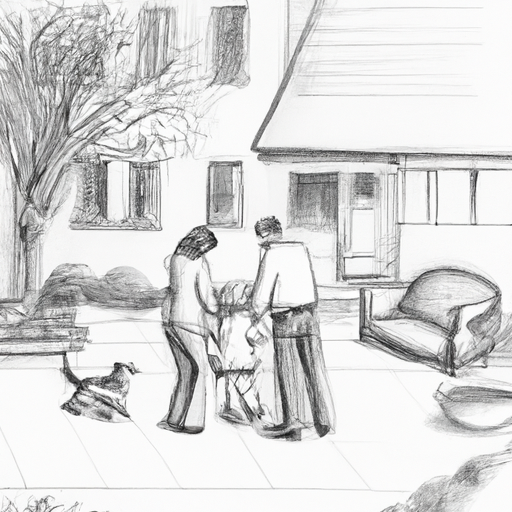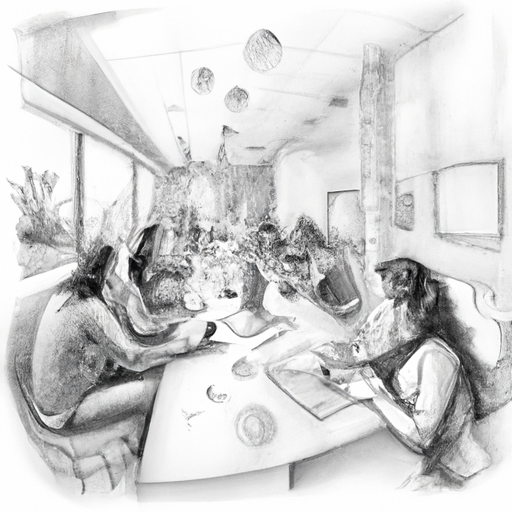The rise of remote work has led to a shift in housing preferences, with more people moving from cities to suburbs and rural areas. This is due to the desire to get more space, flexibility and the ability to work from anywhere. The COVID-19 pandemic has further accelerated this trend. As a result, there is demand for flexible living spaces that can accommodate work and productivity, leading to higher housing prices. It has also led to the emergence of digital nomads and remote work-friendly communities.
In recent years, the rise of remote work has revolutionized the way we work and live. With the development of technology and the growing demand for flexible work arrangements, more and more people are getting the freedom and convenience of remote work. As a result, this shift in work culture has had a profound effect on housing trends. The impact of telecommuting on the housing market cannot be ignored, from changing housing preferences to adapting homes for telecommuting. In this article, we explore the various ways in which telecommuting has shaped residential trends, including the shift from urban centers to the suburbs, the need for flexible living space, the impact on housing prices, and the emergence of a climate conducive to telecommuting. community Join us as we delve into the exciting intersection of telecommuting and home and learn how this revolution is changing the way we live and work.
- 1. “Development of remote work: how it shapes residential trends”
- 2. “From City Centers to Suburbs: How Remote Work Changes Residential Preferences”
- 3. “Flexible Living Space: Adapting Homes for Remote Work and Productivity”
- 4. “The revolution of remote work: studying the impact on prices in the housing market”
- 5. “Digital Nomads and Cohabitation: The Emergence of Remote Work-Friendly Communities”
1. “Development of remote work: how it shapes residential trends”

The rise of remote work has had a major impact on housing trends around the world. As more and more companies adopt telecommuting policies and advances in technology make it easier to work from anywhere, people are no longer tied to living in close proximity to their offices. This new flexibility has led to a change in people’s attitudes and choices.
One of the most significant housing trends impacted by remote work is the growing demand for suburban and rural areas. Urban areas used to be the choice for professionals because of their proximity to job opportunities and amenities. However, as telecommuting becomes a viable option, many individuals and families are looking for larger homes with more space, away from the hustle and bustle of city life.
This shift to suburban and rural life is due to several factors. First, remote workers no longer have to commute long distances, allowing them to prioritize quality of life and find housing in more affordable areas outside of major cities. In addition, the desire to have a home office or
2. “From City Centers to Suburbs: How Remote Work Changes Residential Preferences”

The rise of remote work has caused a significant shift in residential preferences, with more people and families choosing to move from urban centers to the suburbs. The traditional appeal of city life, with its bustling streets, diverse cultural offerings and proximity to work opportunities, has fallen by the wayside as people prefer the freedom and flexibility that remote work provides.
One of the main reasons for this shift is the desire for more space. As remote work eliminates the need for daily commutes, people are no longer limited by proximity to their workplace. This newfound freedom has led many to look for larger homes with dedicated office space, outdoor areas, and extra rooms that can accommodate the needs of their remote work lifestyle. Suburban areas often offer more affordable and spacious housing options, making them an attractive choice for those looking to upgrade their living conditions.
In addition, the COVID-19 pandemic has further accelerated this trend. As the health crisis limits social interactions and closes many businesses and entertainment venues in urban centers, the once-vibrant city
3. “Flexible Living Space: Adapting Homes for Remote Work and Productivity”

With the rise of remote work, homes are no longer just a place to eat and sleep, but also serve as offices and meeting places. This change in the way we work has led to a growing demand for flexible living spaces that can be adapted for remote work and productivity.
One of the key aspects of creating a flexible living space is the inclusion of dedicated work areas. Today, many homeowners are turning spare rooms, basements, or even closets into home offices. These spaces are designed to provide a quiet, distraction-free environment where people can focus on their work. In addition, ergonomic furniture and adjustable desks are becoming increasingly popular for comfort and productivity.
Another trend in the adaptation of buildings for remote work is the integration of technologies. High-speed Internet connectivity, smart home systems, and video conferencing capabilities are essential for seamless remote work. Homeowners invest in a reliable Internet infrastructure to support virtual meetings and file transfers. In addition, smart home devices such as voice assistants and automated lighting systems are used
4. “The revolution of remote work: studying the impact on prices in the housing market”

The development of remote work has had a significant impact on prices in the housing market. The ability to work from anywhere has led to a change in housing trends, as people are no longer tied to living close to their workplace. This new flexibility has created a surge in demand for housing in areas previously overlooked or considered less desirable.
One of the most visible effects of the telecommuting revolution on housing prices is the increase in demand for suburban and rural areas. In the past, urban areas were the most sought after because of their proximity to job opportunities and amenities. However, with telecommuting becoming more common, people are now looking for larger homes with more space for home offices and outdoor spaces. This has led to a sharp increase in demand for housing in suburban and rural areas, driving up prices in these previously less popular areas.
Another impact of telecommuting on housing prices is a shift toward affordable cities. Many people and families are looking to move to areas with a lower cost of living
5. “Digital Nomads and Cohabitation: The Emergence of Remote Work-Friendly Communities”

Digital Nomads and Cohabitation: The Emergence of Remote Work-Friendly Communities
The rise of remote work has not only changed the traditional work landscape, but also spawned a new breed of professionals known as digital nomads. These people have taken advantage of the freedom and flexibility that remote work offers, allowing them to work from anywhere in the world. As a result, they have sparked the emergence of remote work-friendly communities where like-minded people come together to live and work in a collaborative environment.
Co-living, a concept once reserved for students and young professionals, has now become a popular housing trend among digital nomads. Co-living spaces are designed to meet the specific needs of remote workers, providing them with a conducive environment to work, socialize and collaborate with fellow professionals. These spaces often offer a range of amenities, such as high-speed internet, dedicated workspaces, communal areas for socializing, and even organized events and workshops.
One of the main advantages of co
In summary, telecommuting has had a significant impact on housing trends, changing housing preferences and driving the need for flexible living space. The rise of remote work has led to a shift from urban centers to the suburbs as people seek more space and a better work-life balance. Homeowners and renters alike are adapting their homes for remote work by creating dedicated workspaces and implementing technology to improve productivity. In addition, the telecommuting revolution has also affected housing prices, with some areas seeing a surge in demand and increased competition. Finally, the emergence of remote work-friendly communities such as digital nomads and co-living spaces underscores the desire for connection and collaboration among remote workers. As telecommuting continues to evolve and grow, it will undoubtedly continue to shape housing trends and change the way we live and work.
 Purex find
Purex find